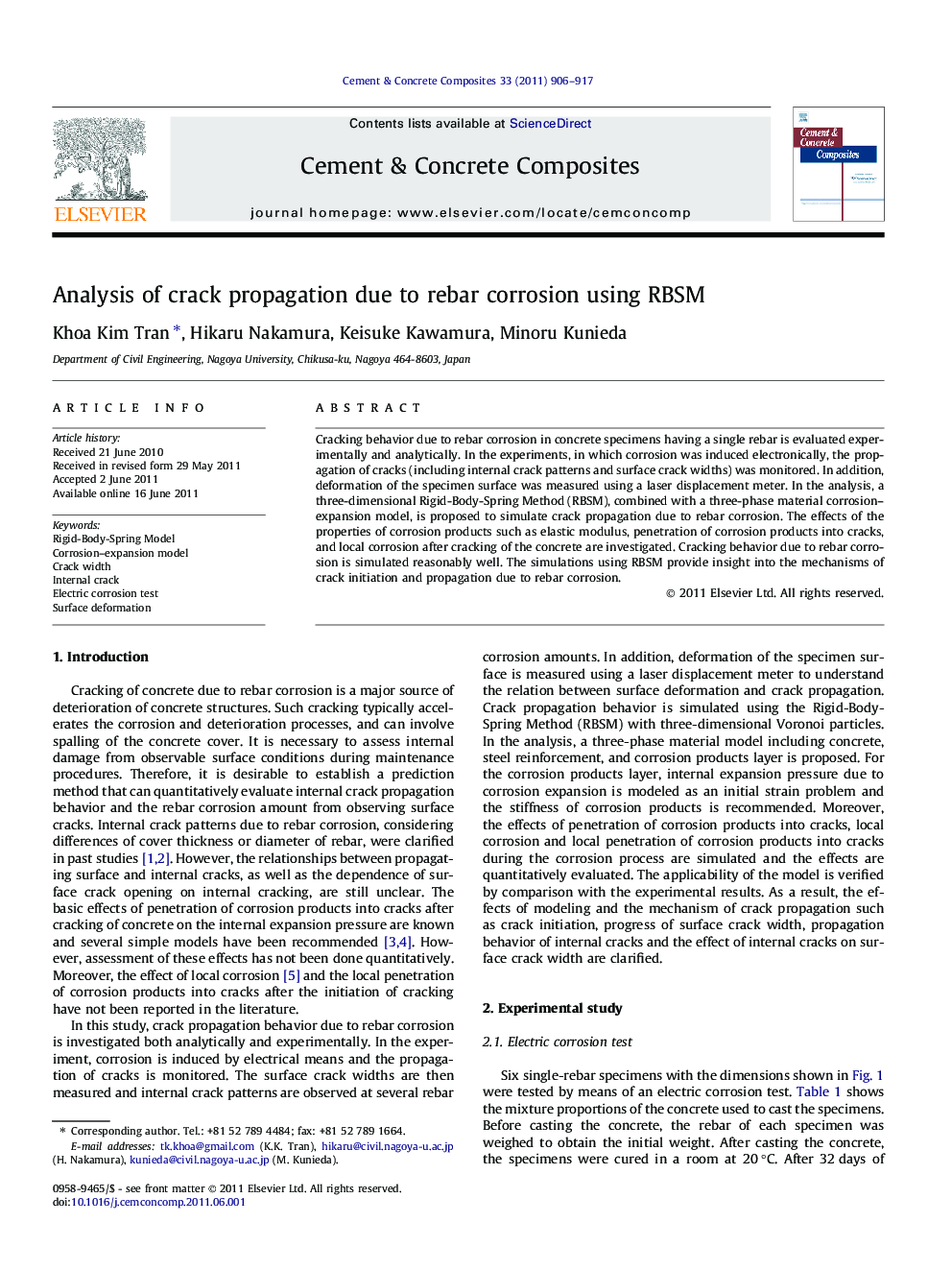| Article ID | Journal | Published Year | Pages | File Type |
|---|---|---|---|---|
| 1455157 | Cement and Concrete Composites | 2011 | 12 Pages |
Cracking behavior due to rebar corrosion in concrete specimens having a single rebar is evaluated experimentally and analytically. In the experiments, in which corrosion was induced electronically, the propagation of cracks (including internal crack patterns and surface crack widths) was monitored. In addition, deformation of the specimen surface was measured using a laser displacement meter. In the analysis, a three-dimensional Rigid-Body-Spring Method (RBSM), combined with a three-phase material corrosion–expansion model, is proposed to simulate crack propagation due to rebar corrosion. The effects of the properties of corrosion products such as elastic modulus, penetration of corrosion products into cracks, and local corrosion after cracking of the concrete are investigated. Cracking behavior due to rebar corrosion is simulated reasonably well. The simulations using RBSM provide insight into the mechanisms of crack initiation and propagation due to rebar corrosion.
► An analytical model using 3D-RBSM is proposed to evaluate corrosion-induced cracking. ► Three-phase material corrosion model is effective to simulate internal expansion. ► Local corrosion model after concrete cracking influences internal crack patterns. ► Penetration of corrosion products into cracks quantitatively influences the cracking. ► Analytical results are verified qualitatively and quantitatively against experiments.
